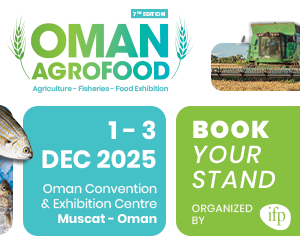The fisheries sector is a cornerstone of food security and local economic development in Oman. In 2023, the Sultanate recorded a total fish production of approximately 793,000 tonnes, valued at RO 189 million—a 5.9% increase compared to 2022. The sector’s contribution to GDP rose by 17.3%, from RO 364.5 million to RO 427.7 million. Over 90% of fishing activities remain artisanal, underscoring the sector’s sustainable foundations.
The Agricultural and Fisheries Development Fund has played a vital role in this progress, financing 13 fisheries projects by the end of 2023. These initiatives span eight focus areas, including advisory services, awareness campaigns, and monitoring programs that promote responsible marine resource use. The fund has also supported aquaculture efforts aimed at conserving genetic diversity and improving operational efficiency.
Key projects include the development of an electronic fish marketing system in five markets—Sohar, Qurayyat, Seeb, Masirah, and Dibba—as well as plans for a central drying unit for small pelagic fish like sardines and anchovies. Artificial coral reef deployment has also helped replenish fish stocks by creating favorable breeding environments.
Beyond production, the fund supports data and knowledge-driven initiatives. For example, a Fishermen’s Village off Masirah Island provides seasonal housing for artisanal fishers, encouraging higher output and improved livelihoods. A national media program has also been launched to document and preserve Oman’s maritime heritage, including traditional fishing techniques.
In essence, the fund’s support has modernized equipment and practices, strengthened food security, diversified incomes through aquaculture and value-added processing, and reinforced environmental conservation. Through its targeted initiatives, the Agricultural and Fisheries Development Fund continues to enhance Oman’s fisheries sector, uplift fishing communities, and contribute meaningfully to national economic resilience.
Source: Oman Daily Observer




















































































